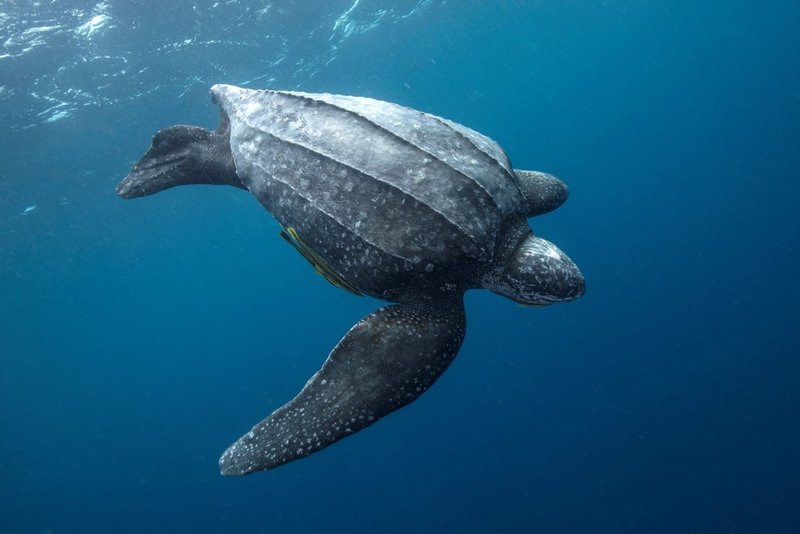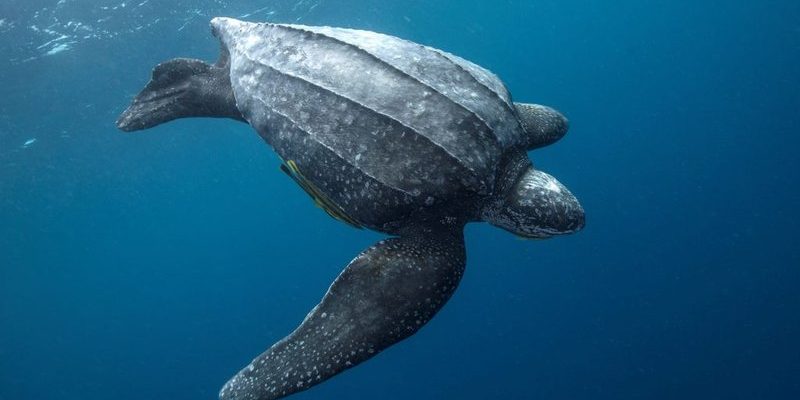
Leatherback turtles are the largest species of sea turtles and can weigh up to 2,000 pounds! They’ve been around for millions of years, gracefully gliding through the ocean and feeding mainly on jellyfish. But here’s the thing: their presence affects much more than just the jellyfish population. In a world increasingly impacted by climate change and pollution, understanding the leatherback turtle’s role helps us grasp the bigger picture of marine health.
Understanding Leatherback Turtles
Leatherback turtles are unique among their relatives. Unlike other sea turtles, they lack a hard shell, which gives them a distinctive appearance. Instead, their bodies are covered with a leathery skin. This adaptation allows them to dive deep into the ocean, reaching depths of over 4,000 feet!
These turtles are also known for their long migrations. They travel thousands of miles between feeding and nesting sites, often crossing entire oceans. This long-distance journey not only showcases their resilience but also connects different marine environments. By doing so, they play a crucial role in nutrient cycling across vast regions of our oceans.
The Role of Leatherback Turtles in Marine Ecosystems
So, what exactly do leatherback turtles do for marine ecosystems? One of their primary contributions is controlling jellyfish populations. Jellyfish can reproduce rapidly and, if left unchecked, can disrupt entire ecosystems.
When leatherbacks munch on jellyfish, they help keep these populations in check. This balance is important not just for the jellyfish themselves, but also for various species that depend on a stable marine environment. A thriving jellyfish population can affect fish populations, as certain fish rely on jellyfish as part of their diet. Hence, a leatherback’s diet directly influences the marine food web.
Enhancing Biodiversity
Leatherbacks are more than jellyfish eaters; they also enhance biodiversity. Their nesting sites on sandy beaches provide a unique habitat for various organisms. When they lay eggs, the nesting process enriches the sand, promoting healthier ecosystems in these areas.
Moreover, their foraging habits promote the growth of seagrass. As they swim and feed, they help circulate nutrients in the water, which benefits seagrass beds. These beds are essential habitats for many marine species, so by maintaining seagrass health, leatherbacks support the broader community of marine life.
The Impact of Leatherback Turtle Decline
Unfortunately, leatherback turtles are facing numerous threats, impacting their populations and, consequently, marine ecosystems. Climate change, pollution, and fishing practices have pushed these magnificent creatures toward endangerment.
When leatherbacks decline, the ripple effects can be felt throughout the ocean. Without their predation on jellyfish, these creatures can balloon in numbers, leading to a chain reaction that disrupts the entire food web. Fish populations might decline due to competition for resources, and ecosystems can become imbalanced, leading to further biodiversity loss.
Conservation Efforts
Recognizing the importance of leatherback turtles has sparked several conservation efforts. Organizations worldwide are working tirelessly to protect nesting beaches, reduce bycatch in fishing gear, and mitigate the impact of pollution.
Local communities are also becoming involved. Through education and awareness campaigns, people are learning to cherish and protect these turtles and their habitats. Innovative solutions, like turtle excluder devices in fishing nets, are being developed to minimize accidental captures. These efforts are crucial because saving leatherbacks means saving the health of our oceans.
How You Can Help Leatherback Turtles
You might be wondering how you can contribute to the conservation of leatherback turtles. Here are some simple but effective ways to get involved:
- Support Conservation Organizations: Donate to or volunteer with groups dedicated to marine conservation.
- Reduce Plastic Use: Plastic pollution is a significant threat to sea turtles. By cutting down on single-use plastics, you help protect their environment.
- Participate in Beach Cleanups: Keeping beaches clean not only protects nesting sites but also helps reduce marine debris.
- Spread Awareness: Educate friends and family about the importance of leatherback turtles and marine ecosystems.
Every small effort counts in ensuring these turtles can continue their role in marine ecosystems for generations to come.
Leatherback turtles might seem like solitary wanderers of the ocean, but they are crucial connectors in our marine ecosystems. By controlling jellyfish populations, enriching habitats, and enhancing biodiversity, they truly are the unsung heroes of the sea.
As we work toward understanding and protecting these gentle giants, we’re not just saving a species; we’re also preserving the delicate balance of life in our oceans. So next time you think about leatherback turtles, remember their vital role and consider how you can make a difference—because healthy oceans mean a healthier planet for all of us.

